Hair transplants are surgical procedures that move hair follicles to balding areas for permanent results, while PRP treatments use your own blood to stimulate hair growth non-surgically. The best choice depends on the extent of hair loss and personal preferences.
Hair Transplant vs. PRP Therapy
Hair transplants and PRP (Platelet-Rich Plasma) treatments are two popular options for addressing hair loss, each with its own unique benefits and considerations.
A hair transplant is a surgical procedure that involves moving hair follicles from a donor area, typically the back or sides of the scalp, to the balding or thinning areas. There are two main techniques used in hair transplants: Follicular Unit Transplantation (FUT) and Follicular Unit Extraction (FUE). FUT involves removing a strip of scalp from the donor area, dissecting it into individual follicular units, and transplanting them to the recipient area. FUE, on the other hand, involves extracting individual hair follicles directly from the donor area and implanting them into the thinning or balding areas. Hair transplants are known for providing a permanent solution to hair loss, with natural-looking results that can significantly improve one's appearance and confidence.
PRP treatment, in contrast, is a non-surgical option that uses the patient's own blood to promote hair growth. The process involves drawing a small amount of blood, processing it to concentrate the platelets, and injecting the platelet-rich plasma into the scalp. PRP is believed to stimulate hair follicles, improve blood supply, and enhance the overall health of the scalp, leading to thicker and healthier hair. One of the main advantages of PRP treatment is that it is non-invasive, with no downtime required, making it a convenient option for those with busy lifestyles. Additionally, PRP uses the body's natural healing processes, which can be appealing to those who prefer more natural treatments.
When choosing between a hair transplant and PRP treatment, several factors should be considered, including the extent of hair loss, personal preferences, and budget. Hair transplants are ideal for those with significant hair loss looking for a permanent solution, while PRP treatment may be more suitable for individuals seeking a non-surgical option with minimal downtime.
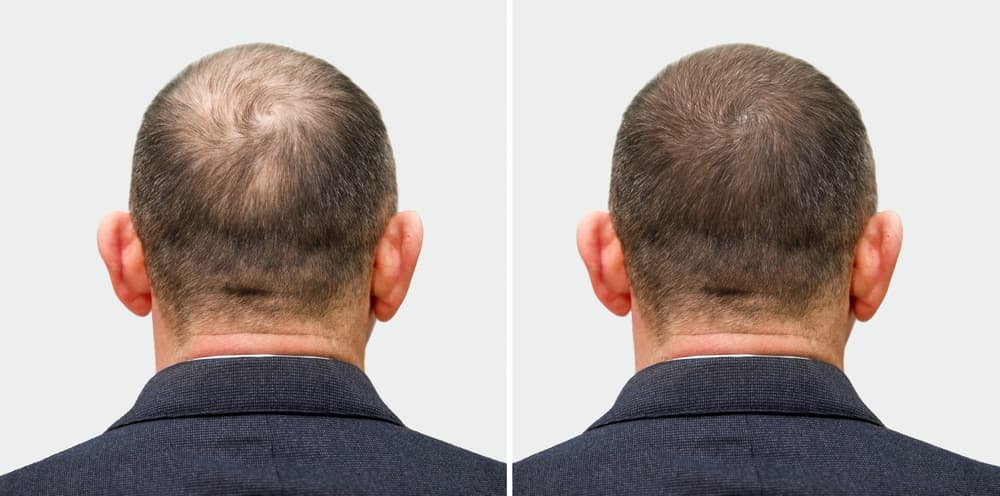
What is a Hair Transplant?
A hair transplant is a medical procedure designed to address hair loss by moving hair follicles from one part of the body, known as the donor area, to the balding or thinning areas, referred to as the recipient area. This procedure is typically performed by a plastic or dermatological surgeon and is considered a permanent solution for hair loss. There are two primary techniques used in hair transplants: Follicular Unit Transplantation (FUT) and Follicular Unit Extraction (FUE).
In FUT, a strip of scalp is removed from the donor area, usually the back of the head, and then dissected into individual follicular units under a microscope. These units are then transplanted into tiny incisions made in the recipient area. This method can move a large number of follicles in a single session, making it suitable for patients with extensive hair loss. However, it does leave a linear scar at the donor site, which can be noticeable if the hair is cut very short.
FUE, on the other hand, involves extracting individual hair follicles directly from the donor area using a specialized punch tool. These follicles are then implanted into the recipient area. FUE is less invasive than FUT and does not leave a linear scar, making it a popular choice for those who prefer to wear their hair short. However, it can be more time-consuming and may require multiple sessions to achieve the desired density.
The transplanted hair follicles are typically resistant to the hormone dihydrotestosterone (DHT), which is responsible for androgenetic alopecia, the most common form of hair loss. As a result, the transplanted hair continues to grow naturally for a lifetime. The procedure is usually performed under local anesthesia, and patients can return home the same day. Recovery involves some downtime, with most people returning to normal activities within a week. Full results can take several months to become visible as the transplanted hair goes through a natural growth cycle.
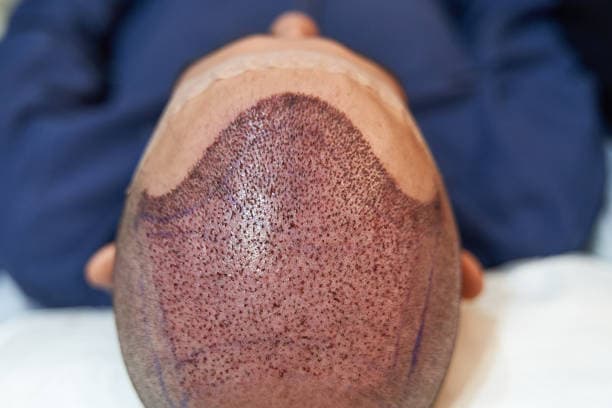
Hair Transplant Pros & Cons
Hair transplants offer a promising solution for those struggling with hair loss, but like any medical procedure, they come with their own set of pros and cons.
Pros of Hair Transplant
Natural-Looking Results: Transplanted hair blends seamlessly with existing hair, providing a natural appearance.
Permanent Solution: The transplanted hair is typically resistant to the hormone responsible for hair loss (DHT), offering long-lasting results.
Minimal Maintenance: Once fully grown, transplanted hair requires no special care and can be treated like natural hair.
Boosted Self-Esteem: Restoring a full head of hair can significantly improve confidence and quality of life.
Customizable: Surgeons can design a hairline that suits your facial features and desired look.
No Allergic Reactions: Uses your own hair, reducing the risk of allergic reactions compared to some topical treatments.
Cons of Hair Transplant
Surgical Procedure: Involves surgery, which carries risks such as infection, scarring, and bleeding.
Recovery Time: Requires several weeks of recovery, during which you may experience swelling, scabbing, and discomfort.
Costly: This can be expensive, with costs varying based on the extent of hair loss and the number of grafts needed.
Not Immediate: Full results can take several months to become visible as the transplanted hair goes through a natural growth cycle.
Potential for Additional Treatments: May need further treatments if hair loss continues in untreated areas.
Limited Donor Hair: The success of the procedure depends on the availability and quality of donor hair.
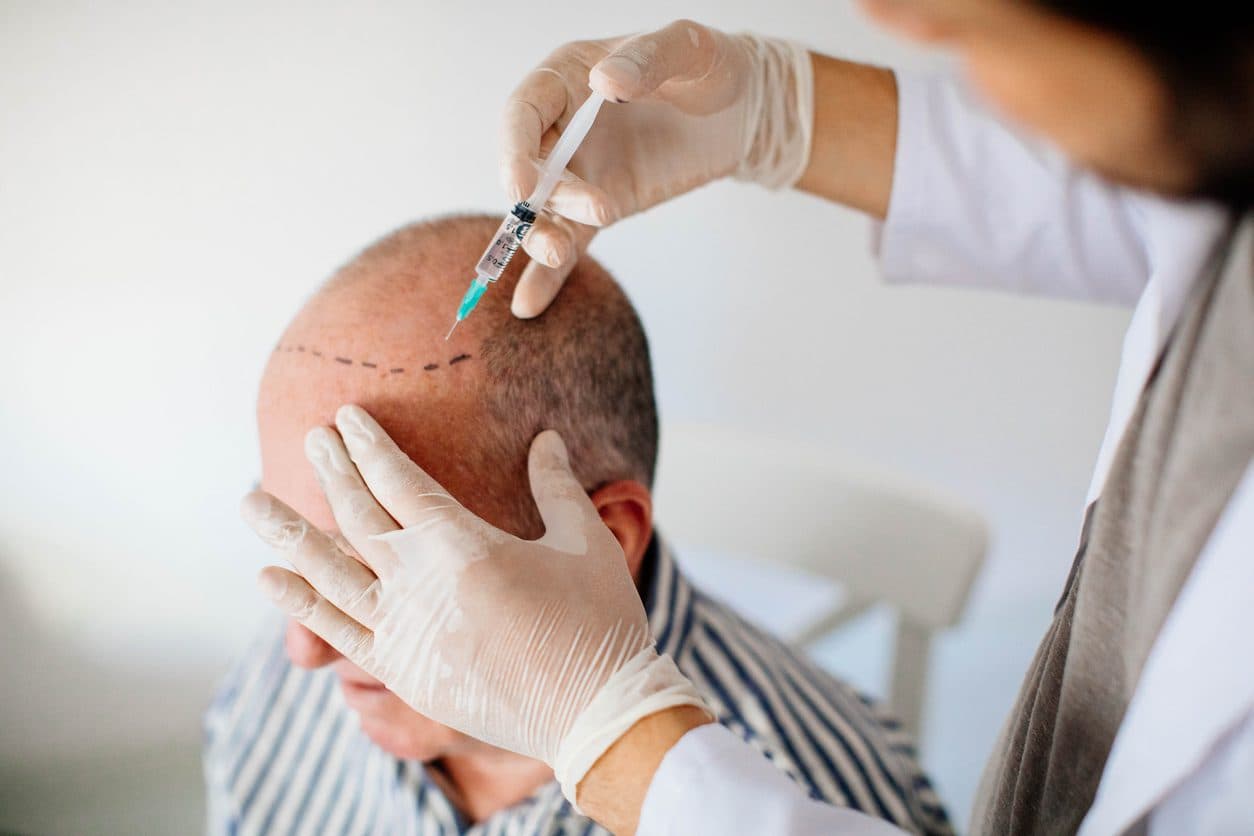
What is PRP Therapy?
Platelet-Rich Plasma (PRP) therapy for hair is a minimally invasive treatment that leverages the body's natural healing processes to promote hair growth. This innovative procedure involves drawing a small amount of the patient's blood, which is then processed in a centrifuge to separate the platelet-rich plasma from other blood components. The resulting PRP, which is rich in growth factors and proteins, is injected into the scalp at the level of the hair follicles. These growth factors are believed to stimulate dormant hair follicles, enhance blood supply, and promote the regeneration of hair tissues, leading to thicker and healthier hair.
PRP therapy is particularly appealing because it uses the patient's own blood, minimizing the risk of allergic reactions or infections. The procedure is relatively quick, typically taking about an hour, and involves minimal downtime, allowing patients to return to their daily activities almost immediately. The treatment is usually performed in a series of sessions spaced a few weeks apart, with maintenance treatments recommended every few months to sustain the results.
One of the key advantages of PRP therapy is its versatility. It can be used as a standalone treatment or in conjunction with other hair restoration methods, such as hair transplants or topical treatments, to enhance their effectiveness. PRP is especially beneficial for individuals in the early stages of hair loss, as it can help to slow down the progression and improve hair density. However, it is important to note that results can vary from person to person, and not everyone may experience significant improvement.
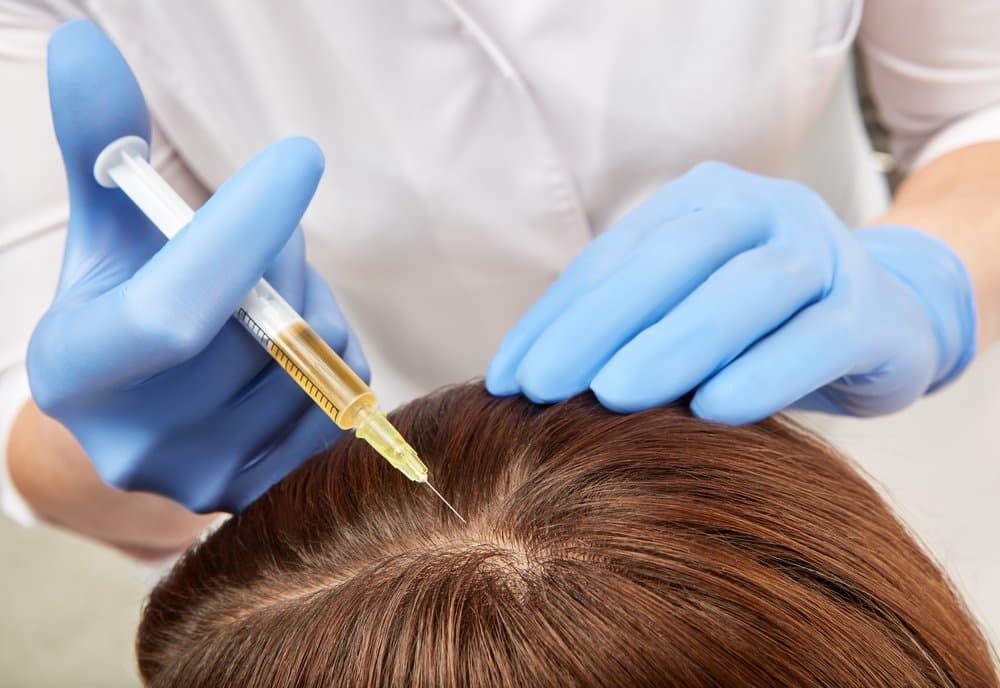
PRP Therapy Pros & Cons
Platelet-Rich Plasma (PRP) therapy for hair loss is a popular non-surgical treatment that uses the patient's own blood to stimulate hair growth. This procedure involves drawing a small amount of blood, processing it in a centrifuge to concentrate the platelets, and then injecting the platelet-rich plasma into the scalp. The growth factors in PRP are believed to promote hair follicle health and stimulate new hair growth. While PRP therapy offers several benefits, it also has some drawbacks.
Pros of PRP Therapy
Non-Invasive: No surgery or incisions required.
Minimal Downtime: Quick recovery, allowing you to return to daily activities almost immediately.
Low Risk of Allergic Reactions: Uses your own blood, reducing the risk of adverse reactions.
Natural Treatment: Utilizes the body's own growth factors to stimulate hair growth.
Versatile: This can be combined with other hair restoration treatments for enhanced results.
Improves Scalp Health: Promotes overall scalp health, potentially leading to thicker and stronger hair.
Effective for Early Hair Loss: Particularly beneficial for those in the early stages of hair loss.
Cons of PRP Therapy
Variable Results: Effectiveness can vary from person to person.
Multiple Sessions Required: Often needs several treatments to achieve and maintain desired results.
Costly: Can be expensive, especially with the need for ongoing maintenance sessions.
Not a Permanent Solution: Maintenance treatments are typically needed every few months.
Limited Effectiveness for Advanced Hair Loss: May not be as effective for individuals with extensive baldness or severe thinning.
Mild Side Effects: Possible side effects include scalp tenderness, swelling, or bruising at the injection sites.
Not Suitable for Everyone: Individuals with certain medical conditions, such as blood disorders or active infections, may not be candidates for PRP therapy.
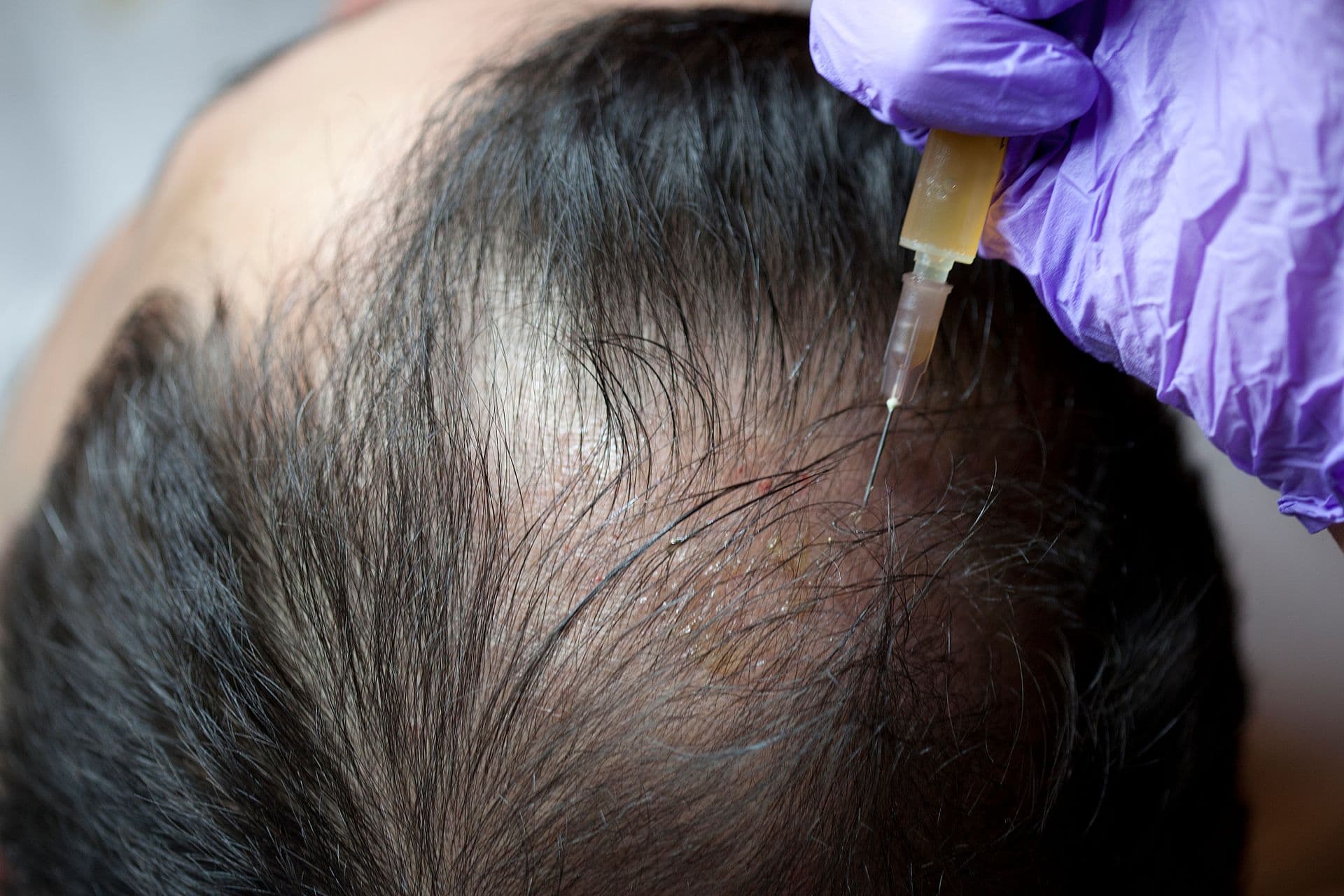
The Difference Between Hair Transplants and PRP Therapy
Both hair transplants and PRP (Platelet-Rich Plasma) treatments are popular methods for addressing hair loss, but they work in different ways and are suited for different stages of hair loss. Hair transplants are ideal for those with significant hair loss looking for a permanent solution, while PRP therapy may be more suitable for individuals seeking a non-surgical option with minimal downtime. The main difference between the two include:
Procedure: Hair transplants involve surgically moving hair follicles from a donor area (usually the back of the head) to the balding or thinning areas. PRP therapy involves drawing a small amount of your blood, processing it to concentrate the platelets, and then injecting the platelet-rich plasma into your scalp.
Results: Hair transplants provide a permanent solution to hair loss with natural-looking results. It typically takes several months to see significant growth. PRP therapy helps to thicken existing hair and slow down hair loss. It is not a permanent solution but can be effective in the early stages of hair thinning.
Recovery: Hair transplants require some downtime for healing, and there may be some scarring, especially with FUT. PRP therapy has minimal downtime, as it is a non-surgical procedure, but requires multiple sessions.
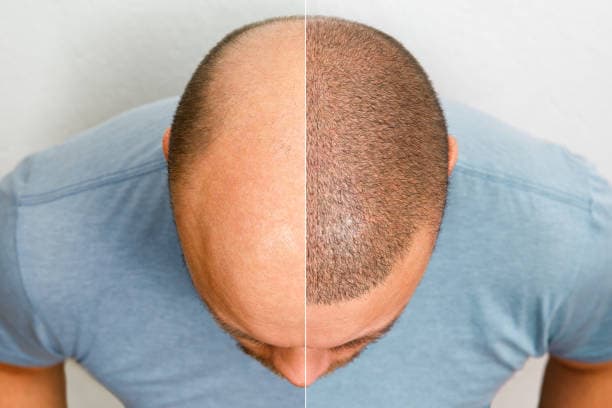
Conclusion
In conclusion, both hair transplants and PRP therapy offer viable solutions for addressing hair loss, each with its unique advantages and considerations. Hair transplants provide a permanent and natural-looking solution, ideal for those with significant hair loss, but involve surgical procedures and recovery time. On the other hand, PRP therapy is a non-invasive option that leverages the body's natural healing processes to promote hair growth, making it suitable for individuals in the early stages of hair loss. However, it may require multiple sessions and ongoing maintenance. Ultimately, the choice between these treatments depends on individual needs, the extent of hair loss, personal preferences, and budget.
Read More